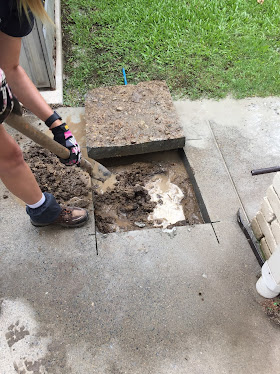How to get started with fixing slab leaks
If you have ever looked at your water bill and seen a sudden huge increase over the past months, there is a high chance that one of your home's foundations has developed a slab leak. Slab leaks are serious problems in homes that need to be fixed quickly before they become worse or cause more damage to your home. Here are some steps to take to identify the problem and fix it.
When you notice an increase in your water bill, use a screwdriver to poke holes along the length of each section of your foundation which is above ground level. Keep track of how many times you have poked holes before you find one that has produced water. This helps narrow down any area where the leak could be coming from.
You can use a visual inspection to detect the slab leak within your home. If you poke holes and find one that leaks, look for puddles or wet entrances along the foundation around where it is leaking. This helps identify which area of your foundation has developed a crack causing it to leak. You can also look for a bump in the floor of a certain section of your home to see if it has dropped from settling. These types of slab leaks are easier to find visually because the damage shows up right away, albeit they can be difficult to access.
If you have poked holes and found that there is no water coming out, place several dishes throughout your home and leave them overnight. If there is a slab leak and it is still not detectable, look for the highest point in your home and where it meets with your foundation. Use a hose to spray water towards the area you think the slab leak may be coming from. Watch to see which dishes collect any water to get an idea of where your slab leak may be.
Slab leaks are serious problems that need to be fixed as soon as possible. It is important to act quickly when you learn your home has developed a slab leak, because the longer it goes unfixed, the more damage it will cause to your home. By identifying where the slab leak is coming from and how it can be fixed, you can save your home from costly damages.
Once you've found the spot where the water is coming from, take photos before taking any further action, so you know which parts need replacing once done fixing it up. If the leak is relatively small, a common household sealant might be enough to get you by for a while, but if it's leaking from multiple spots or from where two pipes meet, find a plumber.
Once the plumber comes and determines what needs replacing, they'll usually get everything ready in advance (i.e., cut out the damaged parts and replace them with the new materials), so you don't have to worry about anything except coordinating a time for them to come over.
If the leak is from where two or more pipes meet (i.e., there's an intersection of multiple drains), start by fixing those first before moving further along, as those are usually easier to replace.
Cleaning the drains in your home is something not everyone can do, so find a plumber you trust and work with them to get it done right the first time around. Good luck!
Conclusion: If you have a slab leak, it's important that the problem is addressed quickly. Contact a professional if your water bill has spiked or remained high for an extended period of time. You'll be glad you did!
Author Bio:- Josephine Floyd
Josephine Floyd is a marketing head at EZ PLUMBING USA. He is an experienced marketing leader with over 12 years of experience in the plumbing industry. With extensive knowledge of severe water damage, mold damage, and fire damage, as well as general plumbing services, he writes articles about water and flood damage repair and restoration along with heating installation, maintenance, and repair to make readers aware of the potential risk and quick actions they can take to reduce damage. Keep reading his latest articles to have an understanding of whether your plumbing system is intact or not; if not, what you should do to fix it.




Comments
Post a Comment